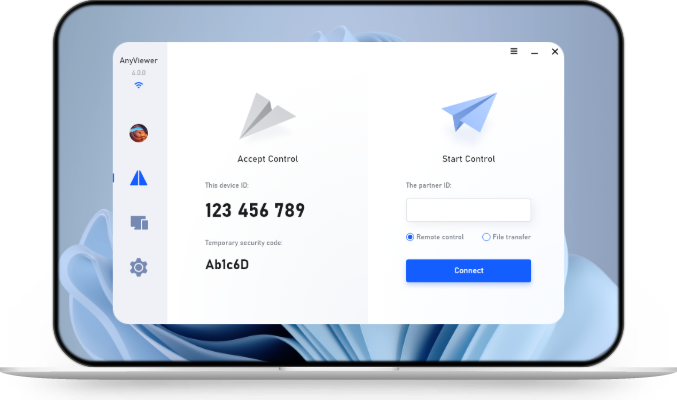[Stepwise Tutorial] How to Check TeamViewer Connection Logs
Delve into the intricacies of TeamViewer connection logs to understand its functionality and significance. From exploring logging practices to deciphering connection history, this article equips you with the know-how to navigate through TeamViewer's logs effectively.
Introduction
TeamViewer, a ubiquitous tool for remote connectivity, serves as a lifeline for businesses and individuals alike, enabling seamless collaboration and support across distances. However, amidst its extensive functionality, lies a crucial aspect often overlooked: connection logs. These logs serve as a treasure trove of information, offering insights into the history and dynamics of remote sessions. In this guide, we'll embark on a journey to demystify the realm of TeamViewer connection logs, empowering you to harness their potential for enhanced productivity and security.
Understanding TeamViewer Connection Logs
At the core of TeamViewer's operation lies the intricate network of connections established between devices. Connection logs capture the essence of these interactions, recording vital details such as session duration, timestamps, and participant identities. Beyond mere documentation, these logs play a pivotal role in troubleshooting technical issues, tracking user activity, and fortifying security protocols. Whether it's diagnosing connectivity issues or monitoring unauthorized access attempts, connection logs serve as a beacon of transparency and accountability in the realm of remote assistance.
Does TeamViewer Keep Logs?
One burning question that often surfaces is whether TeamViewer retains connection logs. The answer is a definitive yes. TeamViewer adheres to robust logging practices, meticulously documenting each session to ensure comprehensive oversight and accountability. By maintaining detailed logs of connection activities, TeamViewer empowers users with a comprehensive audit trail, enabling them to trace the trajectory of every remote session with precision and clarity.
How to Check TeamViewer Connection Logs
Reviewing TeamViewer connection logs is essential for troubleshooting, tracking usage, and maintaining transparency. Fortunately, TeamViewer makes it easy to access these logs across different platforms. Here's how to locate them:
Windows & macOS
Step 1. Open TeamViewer (Classic).
Step 2. Go to Extras > Open Log Files.
Step 3. Look for the file named TeamViewerXX_Logfile.log (XX represents your version number).
Step 4. If you see a file called TeamViewerXX_Logfile_OLD.log, include that as well.
Linux
Step 1. Open the terminal and run the following command:
sudo teamviewer ziplog
Step 2. This will generate a ZIP file containing the log data.
iOS
TeamViewer Remote Control / Meetings
Step 1. Tap Settings in the lower-right menu.
Step 2. Select Show log file.
TeamViewer QuickSupport
Step 1. Tap the three dots (⋯) in the top-right corner.
Step 2. Choose Advanced > Log Files.
Android
TeamViewer Remote Control
Step 1. Tap the three dots (⋯) in the top-right corner.
Step 2. Go to Settings > Log files.
TeamViewer QuickSupport
Step 1. Tap the three dots (⋯) in the top-right corner.
Step 2. Navigate to Advanced > Log files.
TeamViewer Host
Step 1. On the Host login screen, tap the three dots (⋯) in the top-right.
Step 2. Go to Advanced > Log files.
TeamViewer Meeting
Step 1. Tap the three lines (≡) in the top-left corner.
Step 2. Select Settings > Send log files.
Analyzing Connection History
With access to connection logs at your fingertips, the next step is to decipher the wealth of information they encapsulate. From session timestamps to IP addresses, each data point holds significance in unraveling the narrative of remote connectivity. By meticulously analyzing connection history, users can discern patterns, detect irregularities, and derive actionable insights to optimize their remote assistance workflow. Whether it's tracking usage trends or flagging suspicious activities, connection logs serve as a cornerstone for informed decision-making in the realm of remote support.
Bonus Tip: AnyViewer as the Best TeamViewer Alternative
While TeamViewer remains a prominent player in the remote access space, it’s not the only option, nor always the most ideal. If you're seeking a more streamlined, cost-effective, and user-friendly TeamViewer alternative, AnyViewer is worth serious consideration.
AnyViewer stands out as one of the best remote desktop software with its easy-to-navigate interface, fast and stable connections, and robust security features, including end-to-end encryption and multi-factor authentication. It supports remote access, file transfer, and even screen sharing across Windows, macOS, iOS, and Android platforms.
Unlike TeamViewer, AnyViewer offers a generous set of free features without constant reminders about commercial use, making it an excellent choice for individuals and small businesses. For organizations with more advanced needs, upgrading to a Professional or Enterprise plan is highly recommended.
Whether you're an IT professional managing multiple endpoints or a remote worker needing quick access to your office PC, AnyViewer offers a reliable and affordable solution—no learning curve, no headaches.
Conclusion
In conclusion, mastering the art of checking TeamViewer connection logs unlocks a world of possibilities, empowering users with unprecedented transparency and control over their remote assistance endeavors. By leveraging the insights gleaned from connection logs, users can streamline troubleshooting efforts, fortify security protocols, and enhance overall productivity. As we navigate the ever-evolving landscape of remote connectivity, let us embrace the power of connection logs as a beacon of transparency and accountability in the digital realm.
FAQs
Q: Can TeamViewer connection logs be deleted?
A: Yes, users have the option to clear connection logs within the TeamViewer application, ensuring privacy and data management compliance.
Q: Are TeamViewer connection logs encrypted?
A: Yes, TeamViewer employs robust encryption protocols to safeguard connection logs and ensure data integrity during transmission and storage.
Q: Can connection logs be exported for further analysis?
A: Absolutely, users can export connection logs in various formats for in-depth analysis and archival purposes, facilitating compliance with regulatory requirements and internal audits.

